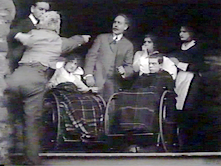MHF TOP PICKS FOR FEBRUARY
Every month, we at the Mueller Health Foundation like to showcase interesting news and updates in the field of tuberculosis. Below are our top 3 picks for February:
- Scientists Reveal Flaws in Tuberculosis Bacterium by Studying Ferredoxins
A team of researchers has studied the structures of ferredoxins from the tubercle
bacillus and their complexes with partner proteins. Small proteins called
ferredoxins play a pivotal role in the main metabolic pathways, the series of
chemical reactions occurring within a cell. Looking at Mycobacterium
tuberculosis, which has five ferredoxins encoded in its genome, the researchers
noticed that two 3Fe-4S-ferredoxins are located next to the genes of P450
cytochromes, proteins involved in important intracellular reactions and
emerging as potential targets for new anti-tuberculosis drugs. Such gene
proximity might indicate a functional relationship between ferredoxins and
cytochromes. The research confirmed that to function properly, cytochromes do
need electrons delivered by protein partners, ferredoxins. With additional
research, the team’s findings could help to find targets for new anti-tuberculosis
drugs. To learn more about the research, you can access the full paper at:
https://www.frontiersin.org/articles/10.3389/fmolb.2022.1100032/full
- Common Heartburn Drugs Could Speed Up Tuberculosis Treatment
Researchers have discovered that over-the-counter drugs commonly used to treat heartburn could shorten the treatment of tuberculosis (TB). These drugs could also reduce the chances of the bacteria that causes TB from becoming drug resistant. The scientists tested if a cardiac and blood pressure drug called verapamil, which blocks human cell membrane pumps, could also block the bacterial cell membrane pump. To do this, they used a neat approach in which they tagged an antibiotic typically used to treat TB, rifampicin, with a fluorescent marker so they could track exactly how the bacteria process the antibiotic. The researchers were able to see that verapamil does indeed stop the bacteria ejecting rifampicin.
DID YOU KNOW?
Public health emergencies have inspired innovations in education. Starting in 1910, Thomas Edison’s lab, which had invented one of the first motion picture devices in the 1890s, partnered with anti-TB activists to produce short films on tuberculosis prevention and transmission—some of the first educational movies ever created.
Between 1910 and 1915, Thomas Edison’s film company made six films about tuberculosis in collaboration with the National Association for the Study and Prevention of Tuberculosis. They’re often called the Red Cross Seal films. The six films are:
- The Red Cross Seal, 1910
- The Awakening of John Bond, 1911
- Hope: A Red Cross Seal Story, 1912
- The Price of Human Lives, 1913
- The Temple of Moloch, 1914
- The Lone Game, 1914
Screened in public places in rural areas, the TB movies were also the first films, of any type, that viewers had ever seen. The anti-tuberculosis crusade was also a model for later efforts to combat polio that relentlessly put that disease at the front of public agenda until an effective vaccination was developed and implemented. It also set a standard for future public health campaigns.

